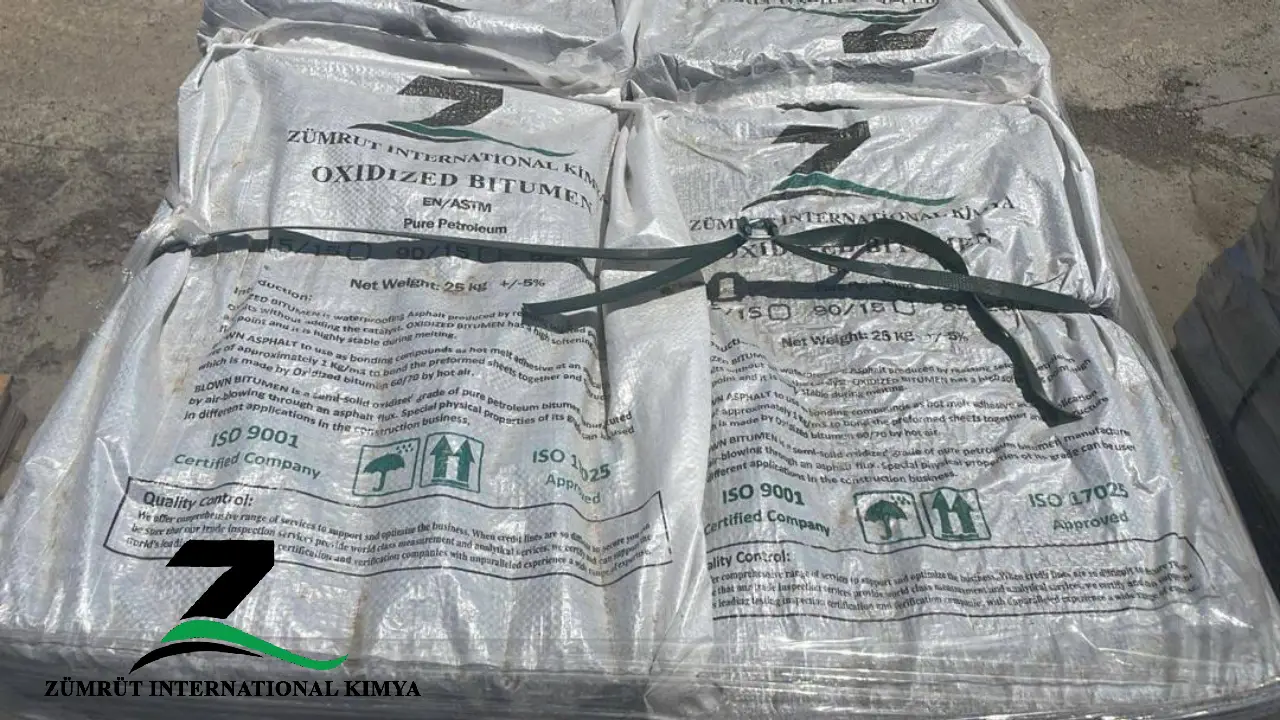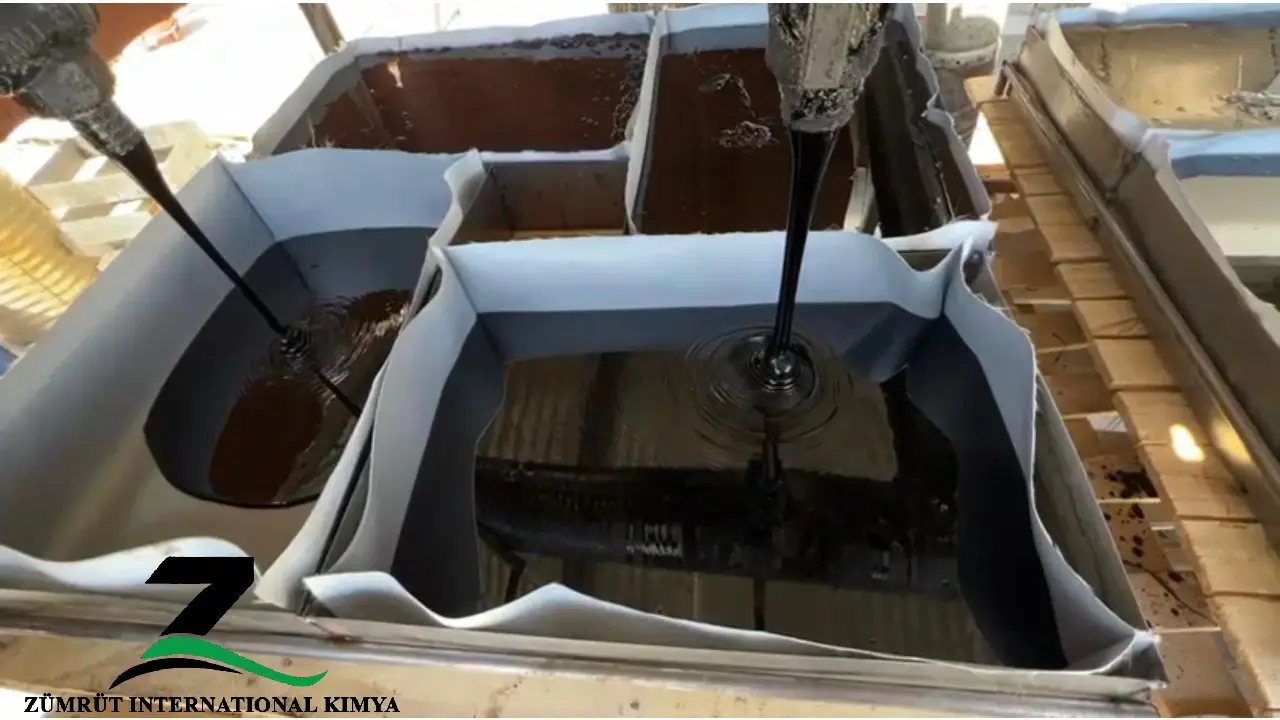
General Description of Blown Asphalt 75/35
Oxidized Bitumen 75/35 is a type of bitumen or asphalt binder commonly used in road construction and paving projects. The “75/35” designation refers to its penetration and softening point properties.
Here’s a general description:
Blown Asphalt 75/35 is derived from the refining of crude oil and undergoes a blowing process to modify its properties. It has a penetration value of 75 dmm (deci-millimeters) at 25°C, indicating its consistency and ability to penetrate aggregate materials. The softening point of 35°C signifies its temperature susceptibility, determining its performance under various climatic conditions.
This specific type of asphalt binder is known for its medium penetration and relatively low softening point, making it suitable for moderate to high-temperature regions where flexibility and resistance to deformation are crucial. It provides good adhesion to aggregates, ensuring durable and long-lasting road surfaces. Additionally, Blown Asphalt 75/35 may be modified further with additives to enhance its properties for specific applications, such as improved aging resistance or increased elasticity.
Oxidized Bitumen 75/35 Applications
Oxidized Bitumen 75/35, with its specific penetration and softening point properties, finds various applications in construction and industrial processes due to its unique characteristics. Here are some common applications:
- Road Construction: Used as a binder in asphalt mixtures for road paving, Oxidized Bitumen 75/35 provides excellent adhesion to aggregate materials and resistance to deformation, enhancing the durability and longevity of road surfaces.
- Roofing Materials: In the roofing industry, Oxidized Bitumen 75/35 is utilized as a waterproofing agent in the production of roofing felts and membranes. Its high softening point ensures stability at elevated temperatures, while its oxidation enhances its waterproofing capabilities.
- Waterproofing: This type of bitumen is also employed in the construction of waterproofing membranes for various structures such as basements, tunnels, and foundations, providing effective protection against water infiltration.
- Pavement Sealing: Oxidized Bitumen 75/35 can be used in pavement sealing applications, such as crack filling and sealing, to prevent moisture intrusion and extend the life of asphalt pavements.
- Joint Fillers: In industrial settings, Oxidized Bitumen 75/35 is used as a joint filler and sealant for concrete pavement joints, expansion joints, and other structural joints, providing a flexible and durable seal against water and debris ingress.
- Undersealing: It is also utilized in undersealing applications for bridges, parking decks, and other structures to protect against corrosion and extend the lifespan of the infrastructure.
- Adhesive Applications: In some cases, Oxidized Bitumen 75/35 is used as an adhesive for bonding various materials in construction and manufacturing processes, thanks to its excellent adhesion properties.
The difference between Oxidized bitumen 90/15 and Oxidized bitumen 75/35
The main differences between Oxidized Bitumen 90/15 and Oxidized Bitumen 75/35 lie in their penetration values and softening points, which affect their performance and suitability for various applications. Here’s a breakdown of the differences:
- Penetration Value:
– Oxidized Bitumen 90/15 has a higher penetration value of 90 dmm (deci-millimeters) at 25°C compared to Oxidized Bitumen 75/35, which has a penetration value of 75 dmm at the same temperature.
– The higher penetration value of Oxidized Bitumen 90/15 indicates that it is softer and more fluid at room temperature, allowing it to penetrate aggregate materials more easily. - Softening Point:
– Oxidized Bitumen 90/15 has a lower softening point of 15°C compared to the softening point of 35°C for Oxidized Bitumen 75/35.
– The lower softening point of Oxidized Bitumen 90/15 means that it becomes softer at lower temperatures, making it more suitable for applications where flexibility and deformation resistance are critical, especially in colder climates. - Applications:
– Due to its higher penetration and lower softening point, Oxidized Bitumen 90/15 is commonly used in applications where greater flexibility and adherence to substrates are required, such as waterproofing membranes, joint fillers, and crack sealants.
– Oxidized Bitumen 75/35, with its lower penetration and higher softening point, is suitable for applications where stability at elevated temperatures and resistance to deformation are essential, such as road construction, roofing materials, and pavement sealing. - Climate Considerations:
– The choice between Oxidized Bitumen 90/15 and Oxidized Bitumen 75/35 may also depend on the climate conditions of the region where the product will be used. For example, Oxidized Bitumen 90/15 may be preferred in colder climates, while Oxidized Bitumen 75/35 may be more suitable for hotter climates.
In summary, while both Oxidized Bitumen 90/15 and Oxidized Bitumen 75/35 are types of oxidized bitumen used in construction and industrial applications, their differences in penetration values and softening points make them suitable for distinct purposes and environmental conditions.

Packing of Blown Asphalt 75/35
ZUMRUT Co is the manufacturer of Blown Asphalt 75/35 in various packing, including bitumen 75/35 is available in 20 & 50 kg Kraft Paper Bags / Poly Amide Bags, 25 kg Carton box and 150, 180, 200kg Steel Drums. In addition, oxidized bitumen packing also palletize, 40 bags can stack on the pallet. 20 pallet can load to the 20ft container.
Recommendations for Handling / Storage Blown Asphalt 75/35
Handling and storing Blown Asphalt 75/35 requires careful consideration to ensure its quality and safety. Here are some recommendations:
- Storage Conditions: Store Blown Asphalt 75/35 in a cool, dry, and well-ventilated area away from direct sunlight, heat sources, and ignition materials. Maintain temperatures below its softening point to prevent excessive softening or degradation.
- Container Selection: Use appropriate containers made of materials compatible with asphalt, such as steel drums or tanks, to prevent contamination and maintain product integrity. Ensure that containers are tightly sealed to prevent moisture ingress.
- Handling Precautions: Wear appropriate personal protective equipment (PPE), including gloves, safety goggles, and protective clothing, when handling Blown Asphalt 75/35 to prevent skin contact and inhalation of fumes. Avoid prolonged or repeated exposure to asphalt vapors.
- Avoiding Contamination: Prevent contamination of Blown Asphalt 75/35 with water, solvents, acids, or other incompatible materials, as it can affect its properties and performance. Clean all equipment and surfaces thoroughly before and after handling the product.
- Heating and Melting: If the asphalt needs to be heated for application, use indirect heating methods such as hot oil baths or steam jackets to avoid direct exposure to open flames or high temperatures, which can cause thermal degradation or fire hazards.
- Mixing and Agitation: Stir or mix Blown Asphalt 75/35 thoroughly before use to ensure uniform consistency and temperature distribution. Use mechanical mixers or agitators designed for asphalt products to achieve proper blending.
- Spill and Leak Response: Have spill containment measures in place, such as absorbent materials and spill kits, to quickly respond to accidental spills or leaks. Follow appropriate procedures for cleanup and disposal of spilled material in accordance with local regulations.
- Transportation: When transporting Blown Asphalt 75/35, ensure compliance with transportation regulations for hazardous materials. Use suitable tanker trucks or containers equipped with proper venting and safety features to prevent leaks or spills during transit.
Technical Advantages of Oxidized Bitumen 75/35
Blown Asphalt 75/35 offers several technical advantages due to its specific properties, which make it suitable for various applications in the construction industry. Here are some of its key technical advantages:
- Penetration Control: Blown Asphalt 75/35 has a relatively low penetration value of 75 dmm (deci-millimeters) at 25°C. This controlled penetration allows for better adhesion to aggregates in asphalt mixtures, resulting in improved stability and durability of road surfaces.
- Softening Point: With a softening point of 35°C, Blown Asphalt 75/35 exhibits moderate temperature susceptibility. This property ensures that the asphalt remains stable at high temperatures encountered during hot weather, preventing deformation and rutting on road surfaces.
- Oxidation Resistance: The blowing process used to produce Blown Asphalt enhances its resistance to oxidation, making it more durable and long-lasting in outdoor applications. This resistance helps to maintain the integrity of asphalt pavements and roofing materials over time, even in harsh environmental conditions.
- Waterproofing: Blown Asphalt 75/35 is effective in waterproofing applications due to its low penetration and high softening point. It forms a tight seal when applied to surfaces, preventing water infiltration and protecting structures from moisture damage.
- Flexibility: Despite its relatively high softening point, Blown Asphalt 75/35 remains flexible at various temperatures, allowing it to accommodate thermal expansion and contraction without cracking or delamination. This flexibility ensures the longevity and performance of asphalt pavements and waterproofing membranes.
- Adhesion: Blown Asphalt 75/35 exhibits excellent adhesion properties, promoting strong bonding between asphalt binder and aggregate particles. This enhances the cohesion of asphalt mixtures, resulting in improved resistance to rutting, stripping, and other forms of distress.
- Versatility: Due to its favorable combination of properties, Blown Asphalt 75/35 is suitable for a wide range of applications, including road construction, roofing, waterproofing, pavement sealing, and joint filling. Its versatility makes it a valuable material for various construction projects.
Technical Data Sheet of Blown Asphalt 75/35
| Bitumen 75/35 | Test method | Unit | Specification |
| Specific gravity @25/25 C | ASTM D70 | (Kg/m3) | 1.05 approx. |
| Penetration @ 25°c | ASTM D5 | mm/10 | 30/40 |
| Softening point °c | ASTM D36 | °C | 70/80 |
| Loss on heating(wt) % | ASTM D6 | Wt. % | 0.2 max |
| Flashpoint c | ASTM D92 | °C | 250 min |
| Solubility is CS2(wt) % | ASTM D4 | Wt. % | 99.5 max |
| Spot test | A.A.S.H.T.O 102 | — | Negative |
Technical Data Sheet of Blown Asphalt 75-35



